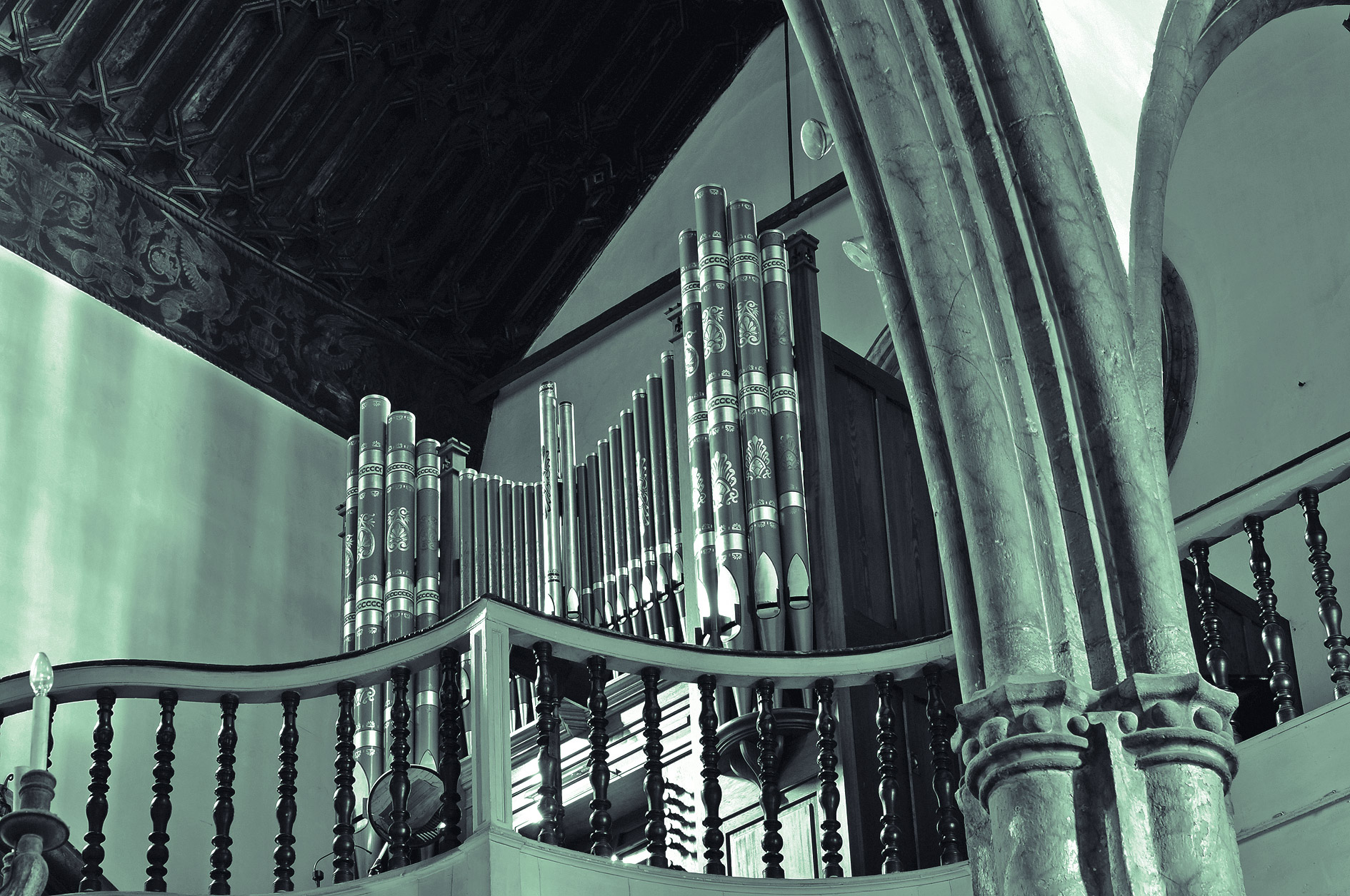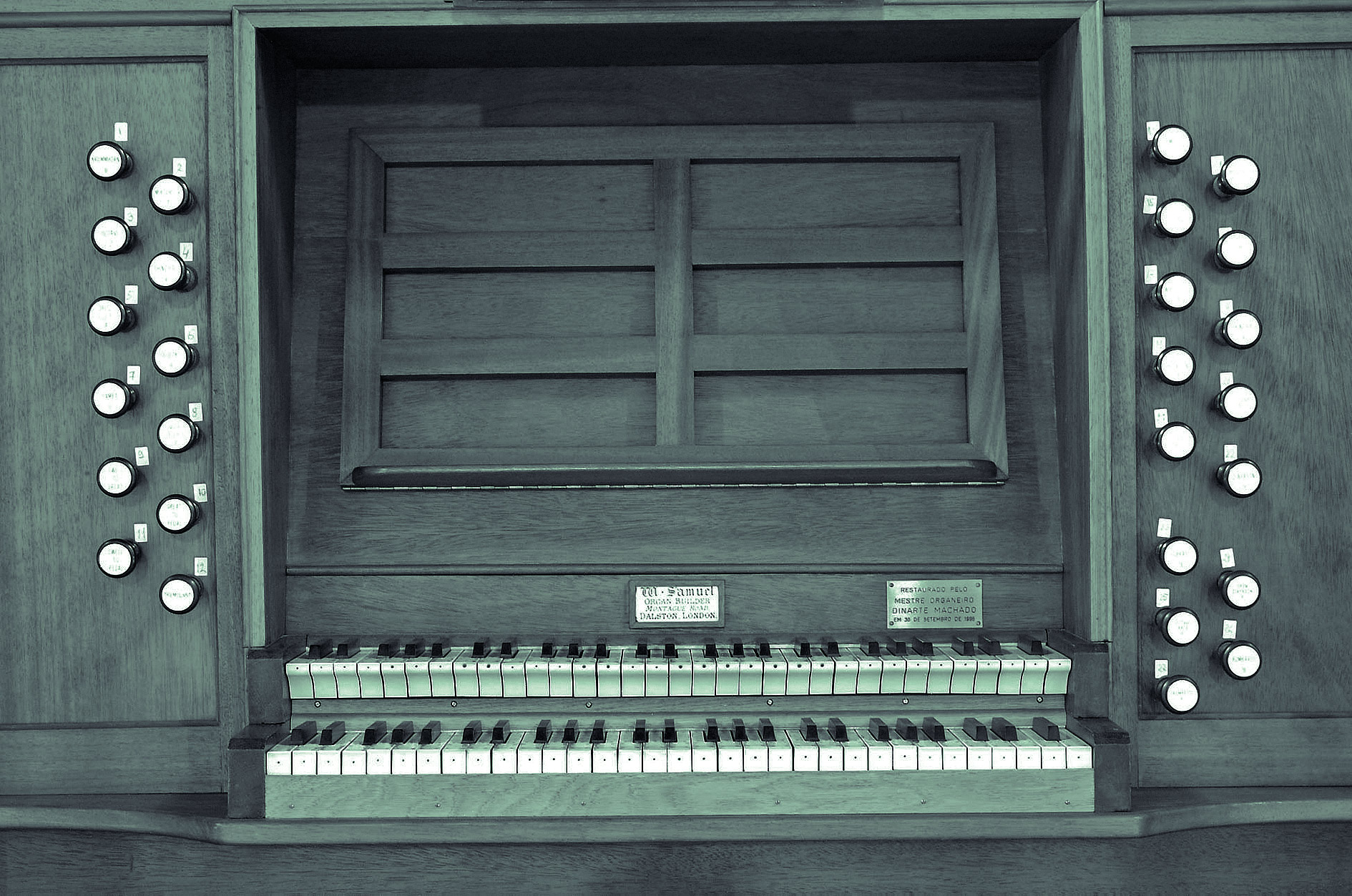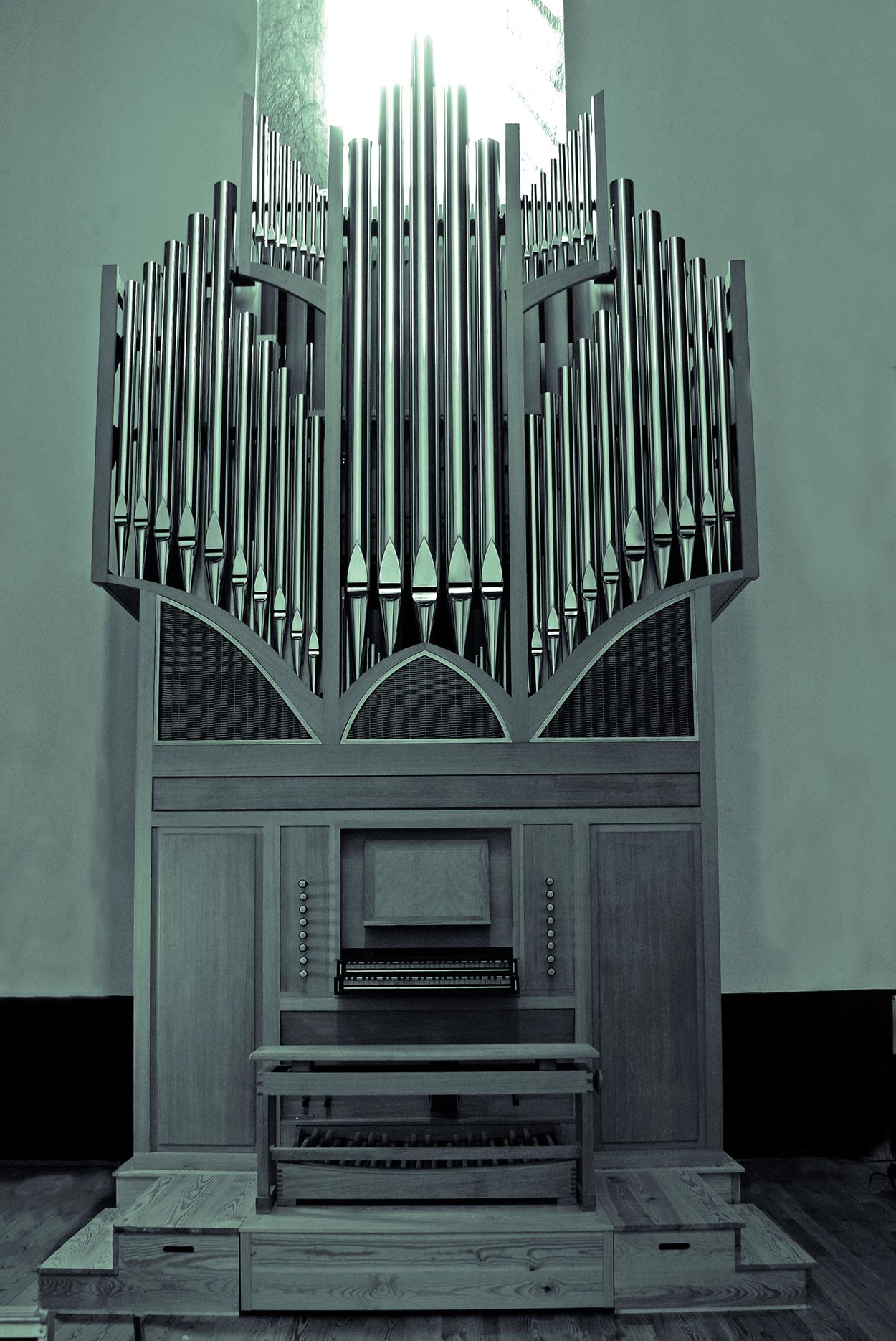![]() T. A. Samuel, 1884
T. A. Samuel, 1884
Dinarte Machado (rest.), 1996

At Funchal Cathedral, the presence of an organ can be documented from the very beginning of the 16th century. In 1739 King João V gave the Cathedral a new organ made in Lisbon by the organ builder Francisco do Rego Matos. In 1740 the Chapter had this instrument placed in the original gallery, placed in a recess above the former sacristy, situated to the left of the sanctuary (Ferreira 1963: 18-19). No longer in working order, this organ was dismantled in 1925 and eleven years later given to the Igreja do Colégio. In its place the Cathedral Chapter decided to buy the organ that belonged at that time to the Anglican Church. The minutes of the Chapter meeting of 5 January 1937 mentions “that by order of His Most Illustrious and Most Reverend Lord, the Bishop had bought the present organ belonging to the Anglican Church, the price of which was thirty-four contos and five hundred escudos (34,500 escudos), added to which the cost of transport, reassembly, etc.”, and that it was placed in the choir gallery at the main entrance of the Cathedral. This instrument, much altered since then, was built in England in 1884, having been ordered by an English doctor who resided in Madeira and also played the organ. At a certain point, this doctor had decided to give it to the Anglican Church.
The organ had resulted from the collaboration of various builders, though T. A. Samuel (Organ Builder, Montague Road, DalstonLondon) was responsible in 1884 for assembly in situ. The pipes – or, rather, some of them – were made by the firm Charles S. Robson (1861), the windchests by Wilson Gunnerson, the manual by the firm S. W. Browne and some of the metal pipes were the work of the company A. Speneir (1884).
Originally using tracker action, some thirty years ago the instrument was considerably altered, with changes made to the mechanism and the addition of a number of reed stops en chamade. These modifications have completely altered the organ’s character, without making any kind of improvement from a musical point of view. As a result of this, and with the intention of endowing the Cathedral with an instrument appropriate for liturgical purposes and for concert work, major restoration to the instrument was undertaken and completed in 1995/96 by Dinarte Machado.

I Manual (C-g’’’)
Open Diapason 8’
Flöte 8’
Holz Bourdon 8’
Principal 4’
Waldflöte 4’
Nazard 2 2/3’
Super Octave 2’
Mixture 1 1/3’ de 4 filas
Dulçaína
Trompette 8
Pedal (C-g’’’)
Subbass 16’
Open Diapason 16’
Octave 8’
Bombarde 16’
Trompette 8’
II Manual (C-g’’’)
Voix Celeste 8’
Gamba 8’
Gedeckt 8’
Principal 4’
Spitzflöte 4’
Octave 2’
Simbala 1’ de 4 filas
Krummhorn 8’
Tremblant
Couplers
I/II
I/Pedal
II/Pedal
Funchal Cathedra
Choir organ
Dinarte Machado, 2017

The new choir organ of Funchal Cathedral is the result of a project organized by the Chapter of the Cathedral, to endow the building with an instrument essentially intended for the current needs of the liturgy, but at the same time appropriate for recitals and other events outside the context of the liturgy. The organ was installed in the south transept, next to the altar and the choir (emphasizing its eminently liturgical vocation), but it can be turned on a central axis and face the central nave.
The case, designed by the organ builder Dinarte Machado, is the result of a free interpretation of the ogival arches of the Cathedral and the majority of the decorative elements refer to religious elements (names of saints) or traditional themes (wicker baskets).
The organ, the final version of which was the result of discussions between the organ builder and the Choir master of the Cathedral, Fr Ignácio Rodrigues, has sixteen registers, spread over two keyboards and a pedalboard. The voicing of all these registers took into account not only the instruments multiple functions, but above all the acoustics of the church.
The phonic conception is very original, not being inspired by any similar instrument, or identified with any period or style. It was intended that, by using its timbral diversity and exploring its capacities, organists could use the instrument in repertoires from many different periods and by many different composers, as well as to encourage contemporary composers to write new works. This was the vision of its builder, Dinarte Machado, who considers that the organ “offers every freedom to the organist as improviser”.
 I Manual - Órgão Principal (C-g’’’)
I Manual - Órgão Principal (C-g’’’)
Flautado 12 aberto [8’]
Flauta em 12 [8’]
Oitava real [4’]
Quizena [2’]
Mistura III
Pedal (C-f’)
Flautado de 24 tapado [16’]
Flauta [8’]
Baixão [16’]
II Manual – Órgão Expressivo (C-g’’’)
Flautado 12 tapado [8’]
Viola da gamba [8’]
Flauta de chaminé [4’]
Dozena [2 2/3’]
Quinzena nazarda [2’]
Dezassetena [1 3/5’]
Dezanovena [1 1/3’]
Clarinete [8’]
Couplers
I - P
II - P
II - I
